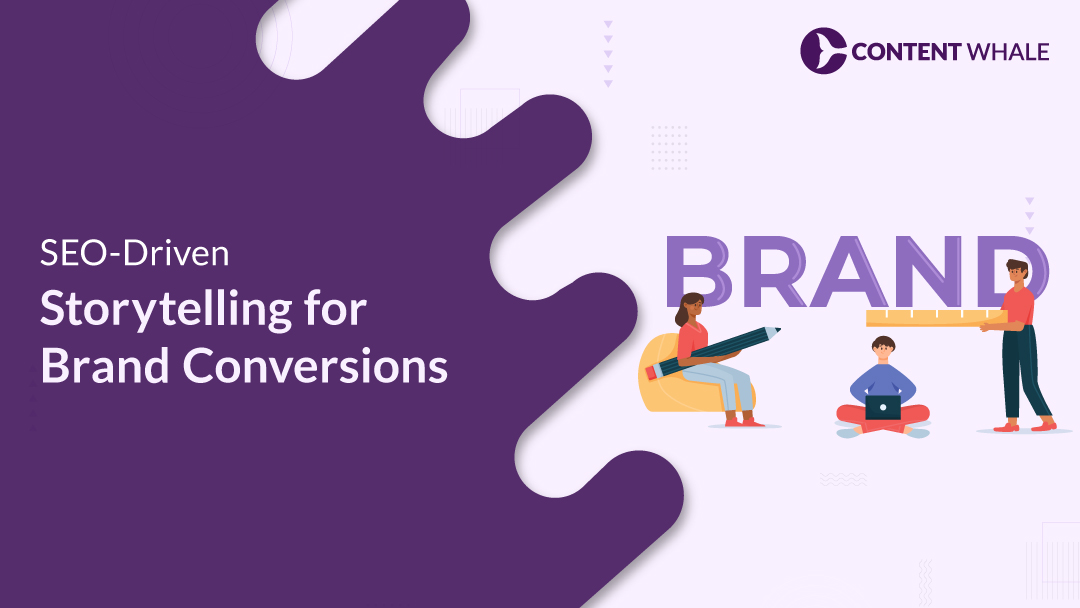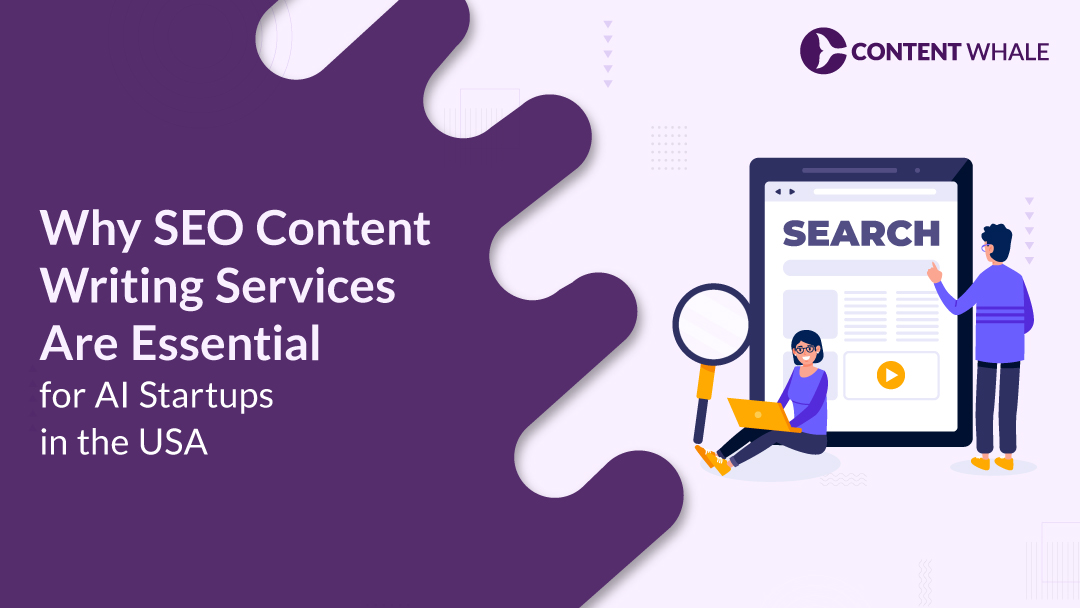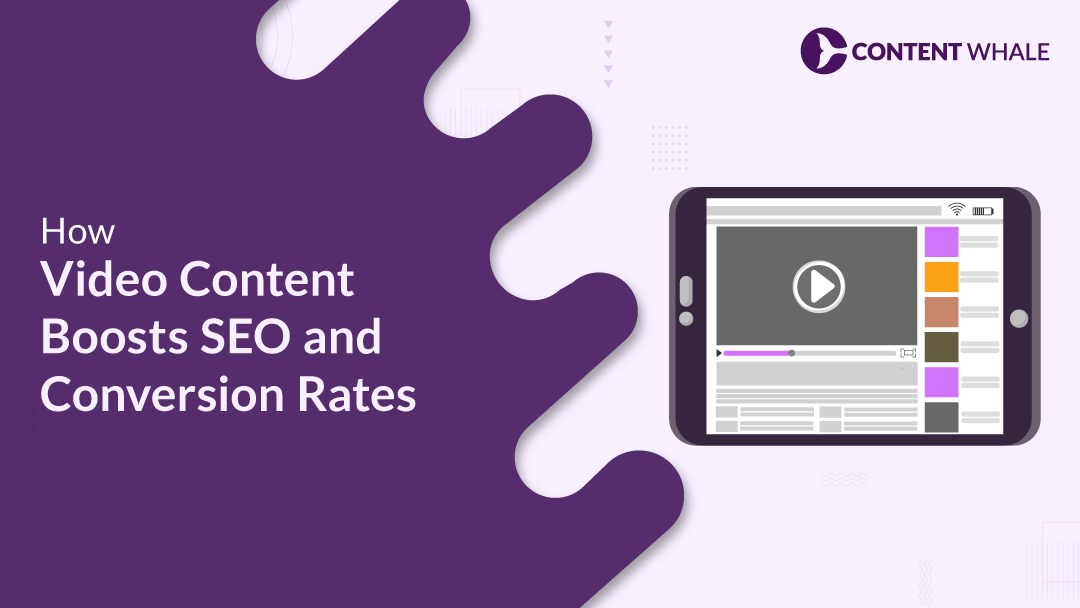SEO-driven storytelling combines effective content strategies with SEO techniques to boost a brand’s visibility while creating engaging narratives. The approach involves using well-researched keywords within stories that resonate emotionally with your audience, encouraging higher user engagement.
When done right, it aligns SEO goals with content that both ranks well on search engines and deeply connects with readers, guiding them towards brand conversions.
By focusing on storytelling in marketing, businesses can not only attract users but also keep them engaged longer, improving metrics like bounce rates and time spent on page.
This balance between compelling stories and SEO strategies is what makes a brand stand out in crowded markets, ultimately driving content-driven SEO and resulting in higher conversion rates.
1. What is SEO-Driven Storytelling?
SEO-driven storytelling is a method that integrates SEO strategies with engaging narratives to improve both search engine rankings and user engagement. Here’s how you can leverage it effectively:
- Focus on Relatability: A key component is creating stories that resonate emotionally with the target audience. Whether it’s sharing customer experiences or brand stories, the narrative must connect at a deeper level. This not only improves user engagement but also encourages longer site visits, which boosts SEO performance.
- Keyword Optimization: Naturally integrate primary keywords like “SEO-driven storytelling” and secondary keywords such as “brand conversions” and “content marketing strategy.” These should be placed seamlessly in headings, subheadings, and throughout the content without affecting readability.
- Structured Content: A well-structured narrative that flows smoothly from problem to solution increases both user satisfaction and search visibility. Break your content into digestible sections using subheadings that include keywords like “narrative in branding” and “emotional marketing.”
- Compelling Brand Voice: A consistent brand voice throughout the content is essential for storytelling in marketing. It helps in making the narrative feel authentic, building trust, and enhancing brand conversions.
- SEO Techniques: Make sure the content is optimized with on-page SEO elements such as meta descriptions, alt texts for images, and internal linking, which further amplifies the effectiveness of SEO-driven storytelling.
2. The Power of Storytelling in Branding
Storytelling plays a critical role in shaping a brand’s identity and driving brand conversions. Here’s why it works:
- Humanizing the Brand: Stories give your brand a human element, making it easier for customers to connect emotionally. When your audience feels connected, they are more likely to trust your brand, leading to increased user engagement and brand conversions.
- Emotional Engagement: Storytelling in marketing taps into the emotional triggers of your audience. This method isn’t just about presenting facts; it’s about using narratives in branding to evoke feelings that influence purchasing decisions. For example, successful campaigns from brands like Nike or Dove use emotional storytelling to foster a strong connection between the customer and the brand.
- Psychological Impact: The psychology behind emotional marketing shows that consumers are more likely to remember and act on messages delivered in the form of stories. This is because stories create a sense of empathy, making the audience more inclined to follow through on a call to action, improving conversion rates.
- Examples of Success: Numerous companies, such as Airbnb and Coca-Cola, use SEO-driven storytelling to share customer stories that not only enhance brand loyalty but also drive higher brand conversions. By presenting real-world scenarios, these brands have built emotional connections with their audience, significantly improving content marketing strategy outcomes.
3. Steps to Implement SEO-Driven Storytelling
Implementing SEO-driven storytelling requires a structured approach to ensure that your content not only tells a compelling story but also ranks well on search engines. Here’s how you can get started:
A) Define Your Brand Story and Core Message
- Start by crafting a story that aligns with your brand’s mission and values. Identify the key message you want your audience to remember.
- The story should resonate with your target audience while reflecting what your brand stands for.
- This is the foundation for creating authentic content that engages readers and drives brand conversions.
B) Integrate SEO Keywords Naturally
- Ensure that primary keywords like “SEO-driven storytelling” and secondary keywords such as “content marketing strategy” and “storytelling in marketing” are seamlessly embedded into the narrative.
- Avoid overstuffing keywords; instead, focus on making them fit naturally within the context of the story. This maintains readability while optimizing for search engine visibility.
C) Optimize Content for Search Engines
After drafting the story, optimize it using on-page SEO techniques. This includes:
- Headings: Use keyword-rich headings to guide the reader through the content.
- Meta Descriptions: Craft a concise, keyword-rich meta description that summarizes the story and attracts clicks.
- Internal Linking: Link to other relevant pages on your website to encourage further exploration and boost SEO performance.
D) Focus on User Intent and Engagement
- Ensure the story addresses the user’s intent by solving a problem or providing valuable insights.
- Content that aligns with what users are searching for is more likely to engage them.
- Also, make the content shareable. When users share your story, it signals to search engines that your content is valuable, which can improve your ranking.
E) Regularly Update Content
- SEO is constantly evolving, and so should your content. Regularly update your stories to include new LSI keywords and reflect current trends in your industry.
- This ensures that your content remains relevant and continues to perform well in search results.
Steps to Implement SEO-Driven Storytelling, including descriptions and the impact of each step:
| # | Step | Description | Impact |
| 1 | Define Your Brand Story | Craft a narrative that aligns with your brand’s mission and values. | Builds emotional connection and consistency, enhancing brand recognition and user engagement. |
| 2 | Conduct Keyword Research | Identify SEO keywords relevant to your audience’s search intent. | Increases search visibility by optimizing content for keywords your target audience is searching for. |
| 3 | Integrate Keywords Naturally | Embed keywords seamlessly into your story without disrupting the narrative. | Ensures the content remains engaging while improving SEO performance for better rankings. |
| 4 | Optimize for User Experience | Ensure the content is easy to read and navigate, especially on mobile. | Enhances user engagement and signals search engines that your content is valuable and user-friendly. |
| 5 | Leverage Visual Storytelling | Use videos, infographics, and images to complement your narrative. | Increases dwell time and encourages sharing, which boosts SEO and attracts more traffic. |
| 6 | Encourage User-Generated Content | Prompt users to share their own stories related to your brand. | Adds authenticity and fosters community, leading to higher user engagement and brand loyalty. |
| 7 | Monitor and Update Regularly | Continuously update stories with new keywords and trends. | Maintains relevance in search results and adapts to changing SEO trends, ensuring sustained visibility. |
4. Storytelling Formats for Different Content Types
Adapting SEO-driven storytelling across various content formats allows brands to maximize user engagement and improve search engine visibility. Here’s how to use storytelling in marketing effectively across different content types:
A) Blog Posts
- Blogs are ideal for sharing in-depth stories that educate and engage your audience.
- Through storytelling, you can explain complex topics in a relatable way, enhancing the reader’s understanding while naturally integrating SEO strategies.
- Use primary keywords like “SEO-driven storytelling” and “content marketing strategy” in headings, subheadings, and throughout the body to ensure your blog ranks well.
Example: Share customer success stories, weaving in narratives in branding to highlight how your product or service solved a specific issue. This type of content boosts both user engagement and brand conversions, leading to a more significant SEO impact.
B) Product Pages
- Instead of simply listing product features, use storytelling to showcase real-life applications of your products.
- For instance, present a narrative around how your product helped a customer overcome a challenge.
- This not only improves the emotional connection with potential buyers but also integrates SEO keywords like “brand conversions” and “emotional marketing” effectively.
- Include user-generated reviews or case studies that illustrate how the product solves problems, which can boost content-driven SEO by increasing page time and encouraging shares.
C) Social Media Content
- Social media platforms like Instagram, Facebook, and TikTok are ideal for sharing short, impactful stories.
- Micro-stories can capture your audience’s attention quickly while incorporating keywords like “SEO strategies” and “user engagement” through hashtags, captions, and even visuals.
Example: Use videos or infographics to tell the story of a customer’s experience with your product, embedding LSI keywords like “narrative in branding” and “content-driven SEO” to increase discoverability. The emotional connection created through storytelling leads to more shares and higher brand conversions.
5. How SEO-Driven Storytelling Improves Conversions
SEO-driven storytelling has a powerful impact on improving brand conversions by blending emotional engagement with strategic SEO tactics. Here’s how it helps move customers from awareness to action:
- Customer Journey: Storytelling takes the audience on a journey, guiding them through various stages of the customer funnel—from awareness to decision-making. When you weave a story into your content, users are more likely to engage with it, spending more time on the page. This signals to search engines that your content is valuable, boosting your SEO performance and brand visibility.
- Emotional Engagement: Content that resonates emotionally enhances the user experience and makes your brand more memorable. For instance, incorporating emotional marketing within your stories can tap into feelings of trust, excitement, or nostalgia. This emotional connection encourages users to take actions, such as signing up for a newsletter, sharing the content, or making a purchase. In this way, storytelling increases both click-through rates and brand conversions.
- Trust and Loyalty: Storytelling builds long-term relationships with customers by fostering trust and loyalty. When users feel connected to your brand’s story, they are more likely to return, make repeat purchases, and recommend your brand to others. This connection is key to boosting brand conversions and generating higher lifetime customer value.
- Optimized for SEO: Stories that are optimized with SEO strategies perform better on search engines, driving organic traffic. By using primary keywords like “SEO-driven storytelling” and LSI keywords such as “content marketing strategy” and “user engagement,” your content becomes more discoverable, leading to increased visibility and conversions. Combining an effective story with solid SEO strategies enhances your brand’s ability to convert readers into paying customers.
How SEO-driven storytelling improves conversions:
| # | Factor | How It Improves Conversions |
| 1 | Emotional Engagement | Creates emotional bonds, boosting trust and conversions. |
| 2 | Building Trust | Builds credibility, leading to higher conversion rates. |
| 3 | Improved User Experience | Engages users longer, improving SEO and conversions. |
| 4 | Social Proof | Real stories increase loyalty and drive conversions. |
| 5 | Emotional Triggers | Uses emotions to prompt immediate actions. |
| 6 | Differentiation | Unique narratives set brands apart, leading to higher conversions. |
| 7 | Social Sharing | Engaging content gets shared, expanding reach and conversions. |
6. Best Practices for Optimizing Storytelling for SEO
To ensure your SEO-driven storytelling effectively boosts both brand conversions and SEO performance, follow these best practices that seamlessly integrate SEO strategies with engaging content:
A) Use Structured Data for Better Search Engine Understanding
- Implement structured data (Schema Markup) to help search engines interpret your content.
- This allows your SEO-driven storytelling to appear as rich snippets, featuring review ratings, FAQs, or product details.
- Enhancing the way your stories are displayed in search results improves click-through rates and increases the chances of brand conversions.
- This strategy enhances both content-driven SEO and overall user interaction.
B) Focus on Mobile Optimization for SEO
- Optimizing for mobile devices is essential in today’s mobile-first world. Ensure your storytelling content is fully responsive, quick to load, and easy to navigate on smartphones.
- Google prioritizes mobile-friendly websites, which directly impacts your SEO rankings.
- A positive mobile experience increases user engagement, which contributes to better SEO performance and higher brand conversions.
C) Encourage User-Generated Stories
- User-generated content (UGC) plays a key role in emotional marketing. Encourage your audience to share their own stories and experiences related to your brand.
- This not only adds credibility but also expands the reach of your content. UGC often includes naturally occurring keywords like “narrative in branding” and “user engagement,” which can enhance your SEO visibility and attract more organic traffic.
D) Optimize Visual and Multimedia Content
- Multimedia storytelling through videos, images, and infographics boosts SEO by keeping users engaged longer.
- Always optimize visual content by using descriptive alt texts, captions, and file names that include relevant SEO keywords like “brand conversions” and “content marketing strategy.”
- Visual elements are more likely to be shared, further increasing your SEO performance.
E) Internal Linking to Boost SEO and Engagement
- Effective internal linking ties various pieces of your storytelling content together, guiding readers to explore more pages on your site.
- This enhances both user engagement and search engine visibility, as search engines can better map your site’s structure.
- Use keyword-rich anchor text such as “SEO-driven storytelling” and “emotional marketing” to strengthen your content’s SEO impact.
Best Practices for Optimizing Storytelling for SEO to help you implement strategies effectively:
| # | Best Practices | Description | Benefits |
| 1 | Use Structured Data | Apply schema markup to enhance how search engines interpret your content, improving visibility in SERPs. | Increases click-through rates and makes rich snippets more likely to appear in search results. |
| 2 | Focus on Mobile Optimization | Ensure your storytelling content is mobile-responsive with fast load times and easy navigation. | Boosts SEO rankings as Google prioritizes mobile-friendly sites, improving user engagement. |
| 3 | Leverage User-Generated Content | Incorporate customer stories, testimonials, and reviews to add authenticity and build trust. | Encourages shares and backlinks, boosting SEO visibility and increasing domain authority. |
| 4 | Optimize Multimedia Elements | Use visuals like images, videos, and infographics with optimized alt texts and descriptions. | Enhances user engagement and improves rankings in image and video search results. |
| 5 | Internal Linking | Create links within your site to related content, guiding users through relevant narratives. | Strengthens on-page SEO by improving site structure, user navigation, and increasing dwell time. |
Conclusion
Incorporating SEO-driven storytelling into your content marketing strategy offers the dual advantage of engaging your audience while improving search engine visibility.
By blending emotionally compelling narratives with smart SEO strategies, brands can build stronger connections with their customers, ultimately driving higher brand conversions.
As content marketing strategy evolves, businesses must continuously update their storytelling techniques and optimize for both emotional marketing and SEO performance.
Brands that successfully integrate these elements will see increased brand conversions, higher visibility, and improved user engagement, ensuring sustained growth in the competitive digital landscape.
At Content Whale, we specialize in crafting SEO-driven storytelling that not only boosts search engine visibility but also enhances brand conversions. With expertise in various content formats—blogs, product descriptions, and social media—we deliver well-researched, keyword-rich narratives that engage audiences and improve user engagement.
Let us help you elevate your content marketing strategy with targeted storytelling and SEO optimization.
FAQs
1. What is SEO-driven storytelling?
SEO-driven storytelling is the integration of SEO strategies with compelling narratives that engage users while optimizing content for search engines. It involves naturally embedding keywords like “SEO-driven storytelling” and “brand conversions” into well-crafted stories that emotionally connect with readers and boost SEO performance.
2. How does storytelling enhance brand conversions?
Storytelling humanizes a brand and builds emotional connections with the audience. By presenting relatable scenarios and solving problems through narratives, brands can foster trust and loyalty. This emotional engagement increases user interaction, which ultimately leads to higher brand conversions.
3. What are the best practices for optimizing storytelling for SEO?
Best practices include using structured data for improved search visibility, ensuring mobile optimization for better user experience, encouraging user-generated stories for credibility, optimizing multimedia content, and using internal linking to boost both SEO and user engagement.
4. Can storytelling be used for all types of content?
Yes, SEO-driven storytelling can be adapted to various content types, including blog posts, product pages, and social media content. Each format allows for different storytelling techniques, all aimed at engaging the audience while improving search engine visibility.
5. How do I measure the success of SEO-driven storytelling?
You can measure success by tracking metrics like conversion rates, time spent on the page, bounce rates, and shares. These metrics indicate how well your storytelling is resonating with your audience and how effectively it is driving brand conversions.





